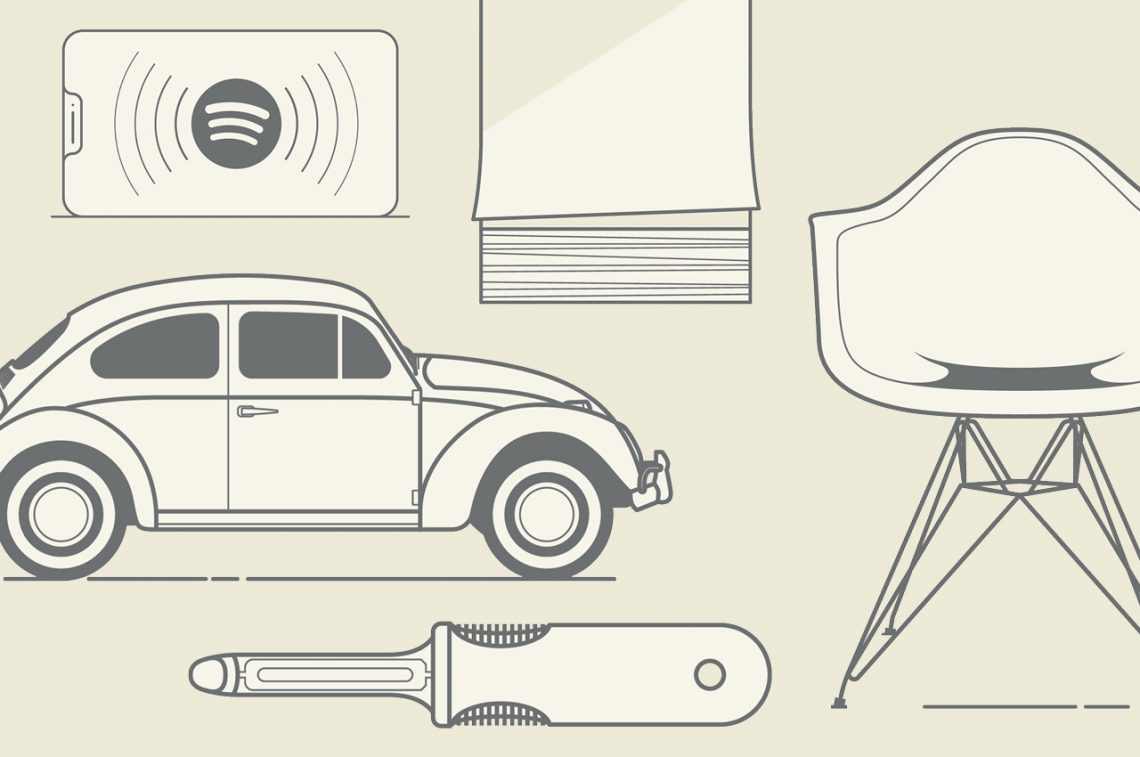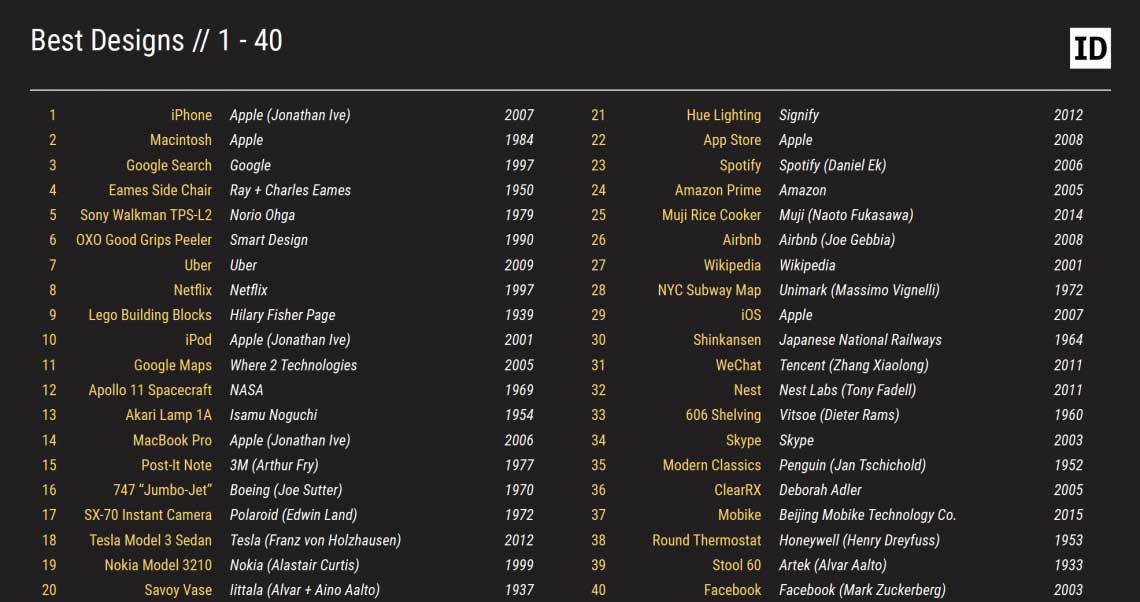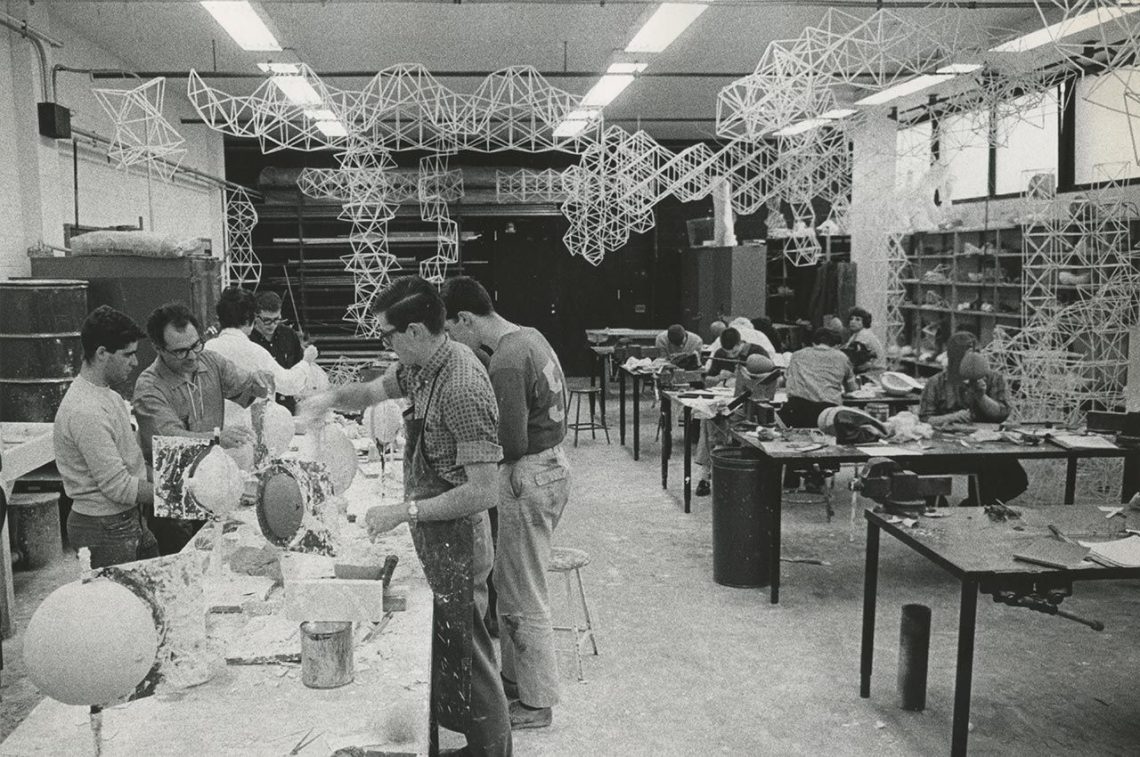What Do the Volkswagen Beetle, an OXO Vegetable Peeler, and Spotify Have in Common?
By Andrew Connor
March 17, 2020

In 1959 Jay Doblin—then director of IIT Institute of Design—led an effort to compile a list of 100 of the best-designed products of the twentieth century. By polling 100 designers, architects, and other design leaders, Doblin and his team put together a list featuring products and designs such as the Volkswagen Beetle and Eames Chair. The list was published in Fortune.
“Perhaps by spotlighting examples of past excellence, we can promote the use and acceptance of good design,” Doblin wrote of his report.
Sixty years later, ID has released a new list, available at Fortune as the “100 Greatest Designs of Modern Times.” ID student and faculty researchers put together their own survey, polling designers, design teams, and influencers in an effort to further define “good design” and discover how perspectives on design have evolved. The Beetle (#49) and Eames Chair (#4) remain—but there are notable differences between the two lists.
While the products in Doblin’s time were largely physical, material goods, with the rise of computing and the internet, many products have become altogether more ethereal. Products on the new list represent new contemporary priorities. Today, with the expanding definitions of “design” and “product,” systems and seamlessness are an integral part of a successful offering. “Internet services” such as Spotify (#23) and Facebook (#40) comprise the largest category of products, with 14 items on the list. Meanwhile, cars and furniture, two of the largest categories in Doblin’s survey (with 18 entries each), make up four and eight entrants, respectively.
The bulk of the products on Doblin’s list were primarily expensive and aspirational high-end goods, but most of the products on ID’s new list are likely to be found in a typical United States domicile, such as the OXO Good Grips Peeler (#6) and Post-It Notes (#15). The shift, ID purports, is indicative of how design has changed from an industry mainly concerned with aesthetics and luxury to one that more widely recognizes the value of function and the needs of everyone, not just the wealthy.
To arrive at the final 2020 list, ID researchers followed Doblin’s original methodology with some key enhancements. Chiefly, they not only crowdsourced opinions on what products to incorporate, they also required respondents to provide rationale for their selections. Likewise, while Doblin’s list emphasized physical design, the new report considers both a product’s performance and its greater societal impact.


